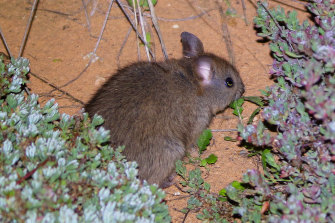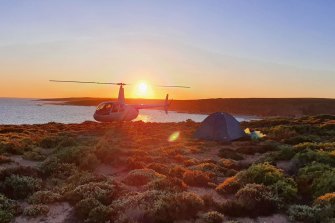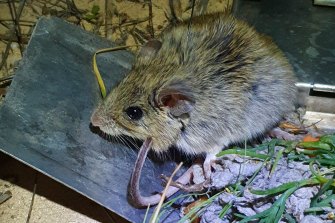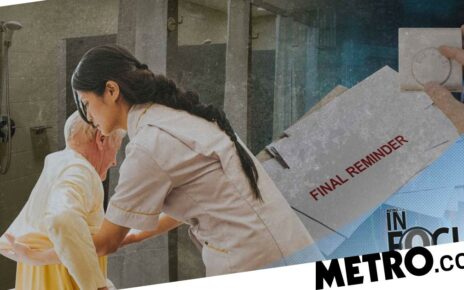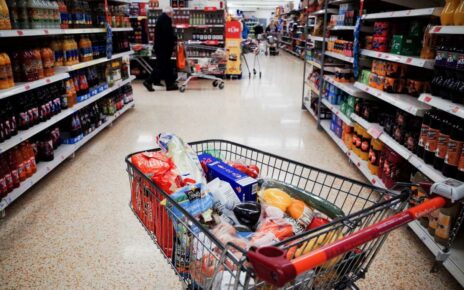An aerial relocation of 60 native rats, which build communal homes made of sticks that are passed down through multiple generations in a matriarchy system, from South Australian islands to the westernmost point of the country has marked the halfway point for an ambitious recovery program.
The greater stick-nest rat, also known as wopilkara, was once abundant across southern Australia until feral predators like foxes and cats wiped out its mainland populations leaving it a threatened species.
Sixty-two greater stick-nest rats have been flown from South Australia to Dirk Hartog Island in nine hours.Credit:Steve Reynolds
The species is being re-established at Dirk Hartog Island off the coast of Western Australia alongside 11 other native mammals and a bird, the western grasswren, as part of a large-scale program setting out to return the area’s environment to something closer to how it was 400 years ago.
Return to 1616, a globally significant program, began with the eradication of sheep in 2016, goats in 2017 and feral cats in 2018. The plan since there has been to return 10 mammals which were once abundant in the region as well as two additional marsupials facing an uncertain future in other parts of the country over a 12-year period.
The Department of Biodiversity, Conservation and Attractions has recently completed one of the toughest logistical challenges in the program by catching and flying a group of stick-nest rats from the Franklin Islands in South Australia some 2160 kilometres across the country to Dirk Hartog in Shark Bay.
It was the second relocation of stick-nest rats for the project after individuals were taken from a previously established colony, also descending from the Franklin animals, on Shark Bay’s Salutation Island last year.
DBCA senior project officer Dr Colleen Sims said a stick-nest rat released last year spent about five weeks travelling close to 40 kilometres before coming back to its initial release area and deciding to set up a home there.
“As their name suggests they build these nests out of sticks and there’s usually a dominant female matriarch and she and her daughters and young males live in the nest,” she said.
“Over time those nests can be passed down multiple generations from a dominant female to the daughter, so they develop a really strong, really well-built refuge that gets passed down generation to generation.
“That’s what we hope to develop over time and see being built on Dirk Hartog, they can build a nest quite quickly and it can increase in size and density and complexity over time.”
Just how many rats the island will be able to support as populations hopefully grow is uncertain.
Sunrise at the Franklin Islands in Nuyts Archipelago, South Australia, where greater stick-nest rats were translocated from to Western AustraliaCredit:Colleen Sims
Dirk Hartog is 63,300 hectares in size and it will be an interesting time for scientists to see how the new populations of different species get along.
So far rufous hare-wallabies, banded hare-wallabies, Shark Bay bandicoots, dibblers, Shark Bay mice and greater stick-nest rats have all been brought back to the island.
Environment Minister Reece Whitby said the 1616 project was ambitious in its goal of restoring the island to a condition similar to when the Dutch visited the area.
“Now with six native fauna species back on the island … the national park is making a major contribution to fauna conservation in WA,” he said.
Sims said the there was potential for some populations of the new species on Dirk Hartog to expand the current global population size by 5 to 10 times.
“That will take time, it will be determined somewhat by their interrelationship between each other too,” she said.
“There will be some overlap in habitat use and competition. It’s certainly an exciting opportunity to make really significant conservation gains for many of these species.”
“We have some monitoring looking at vegetation changes … and there’s certainly suggestions that removal of the herbivores, the sheep and the goats, is resulting in positive changes and recovery of some of the vegetation”.
A Shark Bay Mouse released on Dirk Hartog Island.Credit:Colleen Sims/Department of Biodiversity, Conservation and Attractions
“Certainly as native herbivores re-establish, we would expect a shift and change in the impact, so we may actually get some additional grazing patterns on other species that we haven’t seen before and that will shift those habitat boundaries … the hope is we’re establishing a more natural balance in the ecosystem.”
Dirk Hartog could soon become a source for taking animals and trying to set up colonies in other parts of the country.
Until recently Shark Bay mice, djoongari, were thought to be a unique species to the west until genetic and taxonomic work discovered it was the same as the Gould’s mouse which has become extinct on the east coast of Australia.
“That’s certainly got a lot of biologists in the east excited to reintroduce it,” Sims said.
“Having another healthy population established on Dirk Hartog Island provides an opportunity as another source population. It takes the pressure off those remnant island populations which are very valuable and often difficult to get to.”
Return to 1616 is funded through a $60 million conservation program which global oil and gas giant Chevron pays the Department of Biodiversity Conservation and Attractions as part of its agreements on its Gorgon project 600 kilometres north.
Follow WAtoday on Instagram, LinkedIn, Facebook and Twitter for handpicked selections of the day’s biggest local, national and international news.
Most Viewed in Environment
From our partners
Source: Read Full Article
